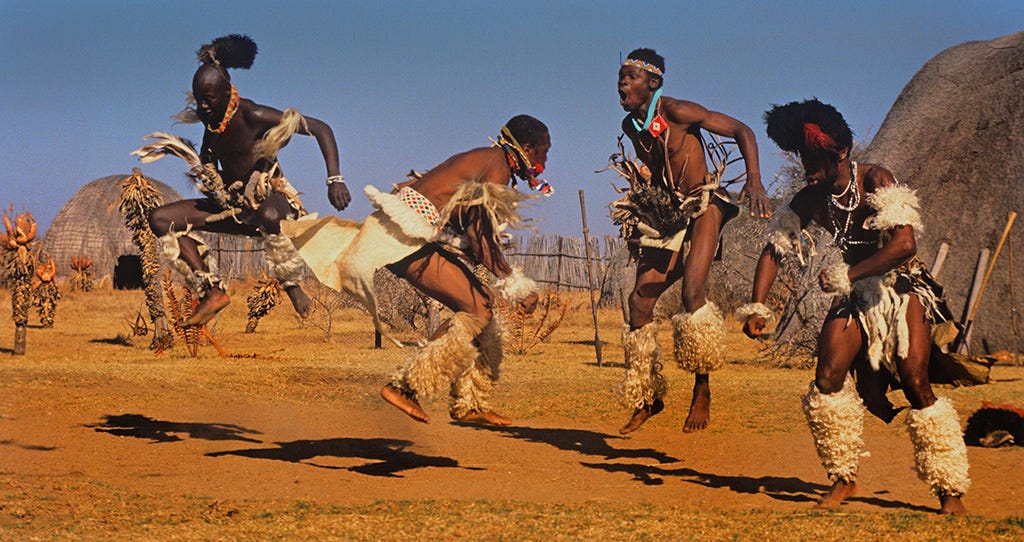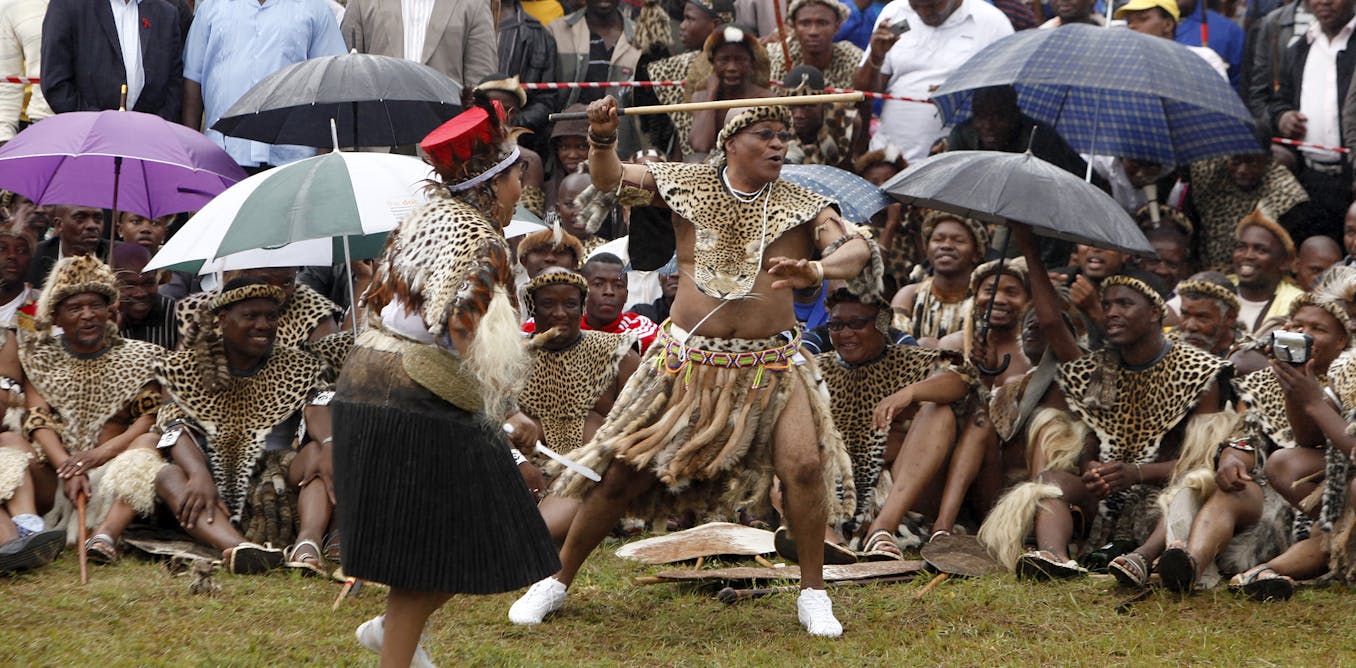Some Ideas on South African Culture Today You Need To Know
Some Ideas on South African Culture Today You Need To Know
Blog Article
The Best Strategy To Use For South African Culture Today
Table of ContentsGetting The South African Culture Today To WorkNot known Facts About South African Culture Today5 Easy Facts About South African Culture Today ShownSouth African Culture Today Things To Know Before You Get ThisThe Best Guide To South African Culture TodayThe Ultimate Guide To South African Culture Today
This adheres to with vocal singing and drum beating. The bride and bridegroom then meet the senior citizens and discuss the significance of their union. An issue of value in Zambian villages is the passing away of liked ones. All participants of the village put cash, time and effort together for the interment of the deceased.Songs and dancing is an extremely crucial aspect of the Zambian society. The different tribal systems have their own dancing forms; nevertheless, makishi is typical among all tribes.
4 Easy Facts About South African Culture Today Shown
When it pertains to music, drums are used one of the most, with a variety of drumming events. In Zambia, majority of the individuals are Christian; Protestant and Roman Catholic. There are tiny groups of Muslims and Hindus, with the rest complying with regional native tribal beliefs.

South African heritage and culture is exceptionally varied, and is composed of numerous various teams of individuals that each have their very own customs and beliefs. Having such a variety of people and cultures is what makes South Africa so one-of-a-kind. In truth feeling of the expression, we are a rainbow country.
South Africa has roughly 3 hundred thousand Portuguese people residing in it. Making it the 7th on the list of countries with one of the most Portuguese individuals in it beyond Portugal. Portuguese is not just a society, however it is additionally a language and a nationality. Portuguese people originate from the country of Portugal in Europe, nevertheless, as a result of Portugal (like many various other countries in Europe) exploring the world and dominating various other countries during the 15th 20th centuries, South Africa has what we call Portuguese South African's living in it.
The Best Guide To South African Culture Today
Amongst the prominent features of the topography is a plateau that covers virtually 2 thirds of the center of the country. The plateau complex increases toward the southeast, where it culminates in the Drakensberg variety, part of a cliff that divides the plateau from the seaside areas. The Drakensburg includes Sparkling wine Castle, the highest peak in the country.
The region north of the Witwatersrand, called the bushveld, slopes downward from east to west toward the Limpopo River, which forms the global border. The western area of the plateau, the middleveld, also descends in the direction of the west and differs in elevation between the highveld and bushveld. In between the Drakensburg and the eastern and southern shoreline, the land descends to the sea.
Nearer the coastline there is a low-lying plain called the eastern lowveld. Southwest of the plateau the country becomes gradually more dry, offering method to the hostile desert of the Great Karroo, surrounded on the east by the lower, better watered plateau of the Little Karroo. Separating the dry southerly interior from the sandy littoral of the southern shore and West Cape is another variety, the Langeberg.
South African Culture Today - An Overview
The nation's racially, ethnically, and politically divided history has produced nationwide and subnational symbols that still work as icons of the country, and others icons that are approved only by specific groups. The monuments to white inhabitant occupation and political prominence, such as the Afrikaner Voortrekker ("pioneer") Monolith in Pretoria and the Rhodes Monument recognizing the British colonial empire contractor and Cape head of state Cecil Rhodes, remain sectarian symbols.
The very first contemporary residents were the San ("bushman") hunter-gatherers and the Khoi ("Hottentot") individuals, that herded animals (South African culture today). The San may have existed for thousands of years and left evidence of their presence why not try these out in countless old cave paintings ("rock art"). Bantu-speaking clans that were the ancestors of the Nguni (today's amaZulu, amaXhosa, amaSwazi, and vaTsonga individuals) and Tswana-Sotho language teams (today's Batswana and Southern and Northern Basotho) moved below eastern Africa as early as the fifteenth century

The 2 previous republics of the Orange Free State and Transvaal (South African Republic) were established by Afrikaner inhabitants that beat and dispossessed the Basotho and Batswana. Lesotho would certainly have been forcibly included into the Orange Free State without the expansion of British protection in 1869. The best marriage of the country arised from the South African War (18991902) in between the British and both Afrikaner republics, which lowered the country to wreck at the start of the twentieth century.
Afrikaners historically considered themselves the only true South Africans and, while granting complete citizenship to all citizens of European descent, refuted that status to people of color up until the democratic transition of 1994. British South Africans preserve a feeling of social and social link to Great Britain without compromising their identification as South Africans.
The Ultimate Guide To South African Culture Today
The diversity and fragmentation within ethnic collections and the equilibrium of tensions in between those groups during the twentieth century avoided interethnic civil problem. While intergroup tensions over resources, privileges, and political prominence stay, those problems are as most likely to pit Zulu against Zulu as Zulu versus Xhosa or African versus Afrikaner.
From colonial India, British sellers and administrators brought the curved metal ornamental roofs and slender lace work columns that still typify the outdoor official statement patios of homes in towns and cities throughout the nation. Holy places contribute a vital architectural element even in the tiniest towns. In enhancement to the skyrocketing steeples and timeless stonework of Afrikaans Dutch Reformed churches, Anglican churches, synagogues, mosques, and Hindu temples provide variety to the spiritual architectural scene.

Slaughtering and the brewing of standard cereal beer are crucial in securing the engagement and goodwill of the ancestors that are considered the guardians of great fortune, prosperity, and well-being. Indian communities preserve their indigenous culinary practices and use them on Islamic and Hindu ritual and ritualistic celebrations. Afrikaners and Coloured people gather at weekends and unique occasions at multifamily bbqs called braais, where neighborhood bonds are reinforced.
Since this was the key you could check here economic enterprise of both black Africans and white homesteaders, problem between those teams focused on the property of grazing land and livestock. In 1867, the largest ruby down payments worldwide were discovered at Kimberley in the west central area. The riches from those areas assisted finance the exploitation of the best gold coral reef in the globe, which was found on the Witwatersrand in 1886.
What Does South African Culture Today Do?
This resulted in misconceptions and intentional misrepresentation in the dealings of white settlers and government officials with African chiefs throughout the early american period (South African culture today). In the establishment of African reserves, some facets of common and chiefly "tribal trust fund" land tenure were maintained, and also in white rural areas, types of common period were still practiced in locations with African neighborhoods
After the democratic makeover of 1994, programs for land restitution, redistribution, and reform were set up, but progress has actually been slow-moving. The white minority still controls eighty percent of the land. Following agricultural land invasions in Zimbabwe, the Department of Land Matters has pledged to speed land redistribution.
Report this page